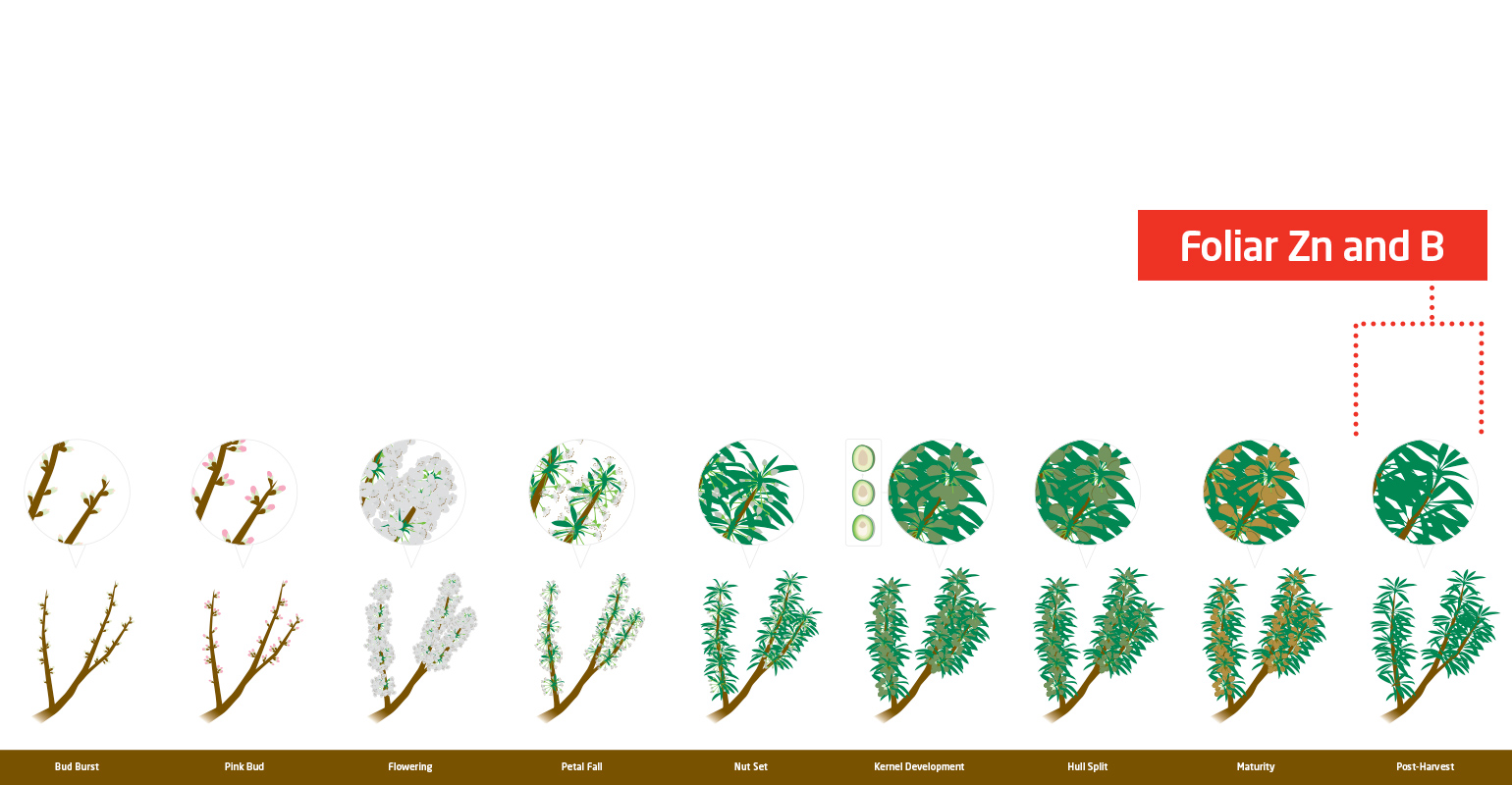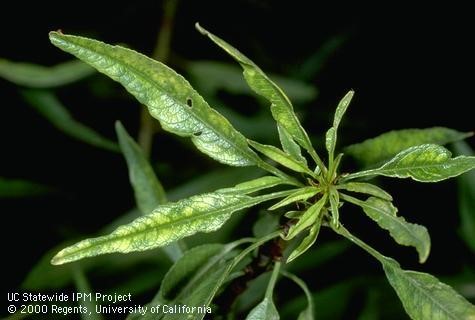Post-Harvest Application of Zinc and Boron on Almonds
July 24, 2020
Agronomics / Background
Zinc (Zn) is essential to many processes such as cell division, protein synthesis, and auxin synthesis in growing points. Boron (B) is essential for cell wall synthesis and division. Boron fertilization improves fruit or nut set compared to deficient plants in many crops. Fruiting buds that will bloom next season will need adequate quantities of Zn and B for effective pollination and good nut set.
Conditions Leading to Zinc and Boron Deficiencies
Zinc deficiencies are common in almond plantings all over the Central Valley of California. Most often it is associated with high soil pH levels which inhibit uptake. High soil phosphate levels have also been shown to induce zinc deficiencies.
Boron will leach out of the rooting zone in sandy soils and high levels of calcium will decrease plant-available boron in the soil.
Desired Zinc and Boron Tissue Test Values
In determining the need to include zinc in a post-harvest spray, it is worth considering where your orchard’s tissue levels were this summer. Trees showing summer leaf levels of 15 ppm Zn or less are considered deficient. However, anything less than 25 ppm is likely to benefit from a post-harvest foliar Zn spray.
For boron, running a hull analysis at harvest may be the best approach. Hull B content of less than 80 ppm is considered deficient. However, if your hull B levels were anywhere below 120 ppm, a post-harvest spray is likely to improve nut set next season. Certain areas, especially those with high B levels in the irrigation water, may have concerns with boron toxicity. Hull boron levels above 300 ppm may lead to excessive gumming from pruning wounds, spurs, and leaf scars, as well as more “stick tight” nuts.
Key Application Timings and Rates
Both zinc and boron play critical rolls in pollination and nut set so it is essential to have adequate levels in next year’s fruiting buds. Pre-bloom foliar sprays can be quite effective, but if high levels of rainfall occur early in the spring, there may not be an opportunity to run a spray rig through the orchard. Post-harvest application is far more flexible as the application window is anytime between harvest and the beginning of leaf senescence. For early varieties like ‘Nonpareil’ this is more than a 2 month window in which to make the application.
Post-harvest sprays of boron will be more effective than a mid-summer application with your hull-split spray. This is because almond hulls are a natural sink for boron accumulation. Any boron applied while the nuts are still on the tree will primarily be directed to the hulls, rather than next season’s fruiting buds which is where it will be needed.
Traditionally, zinc sulfate has been applied at high rates in order to induce defoliation late in the fall. This has some efficacy for reducing disease inoculum and inducing tree dormancy, but it is not likely to greatly impact zinc levels in next year’s buds. Leaf abscission occurs quite rapidly with these types of applications so very little zinc can be mobilized out of the leaves. Additionally, premature defoliation is known to reduce carbohydrate accumulation going into next season.

Almond Zinc Deficiency

